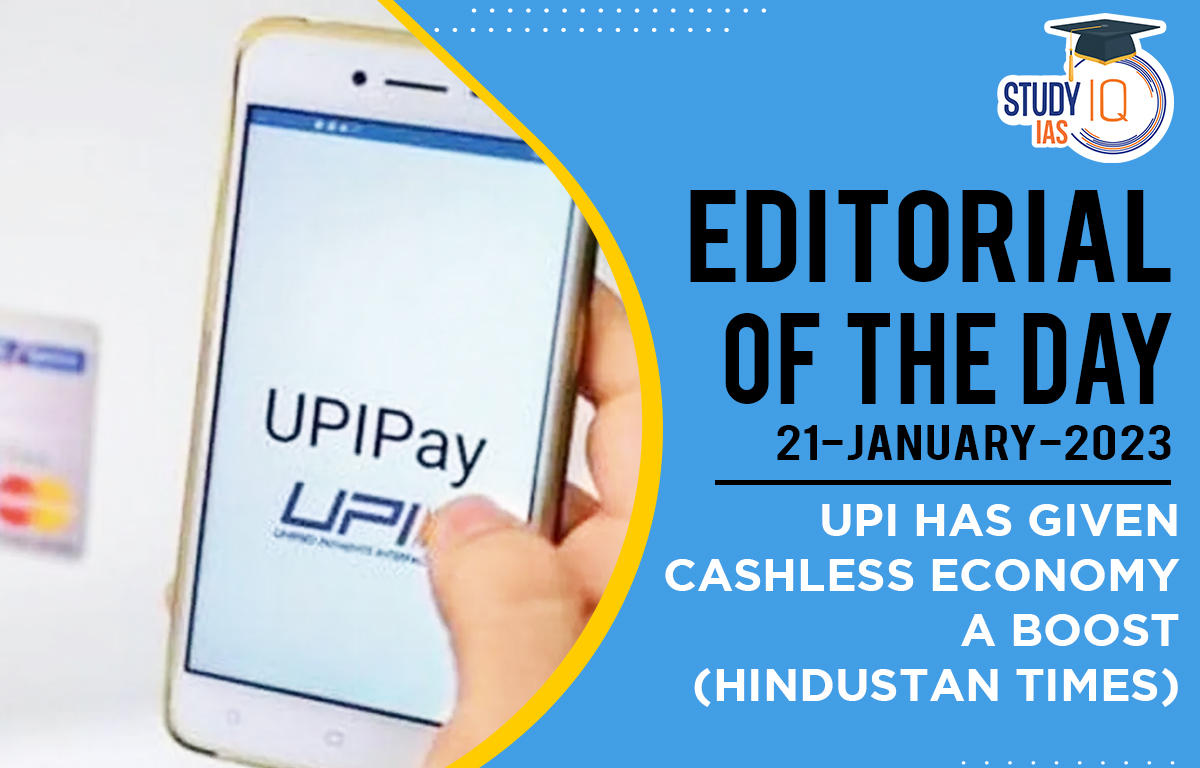Table of Contents
Exam View: Digitalization of the Banking sector, National Payment Corporation of India, Reserve Bank of India, Unified Payment Interface, Cashless Economy, Money Multiplier.
Context of the Article: The article talks about the NPCI’s efforts to boost the digital economy, UPI penetration in rural and urban areas, and the global reach of the Indian payment system.
Author’s Views on Growing Cashless Economy in India
- Growth of UPI: As per the NPCI, transaction volumes on UPI have grown multifold from 2 million in December 2016 to 7.8 billion in December 2022, while the transaction value has risen from Rs 7 billion to Rs 12.8 trillion in the same period.
- UPI has been a game changer in the digital payment sector. In 2021, India alone accounted for nearly 40 percent of the total digital transactions globally.
- How has UPI revolutionized financial services?
- UPI has democratized and universalized access to financial services to anyone having a mobile phone and mobile number linked to their bank account.
- This has been eased through its instant single-click app-based transfer, QR code scanning, bank interoperability, and robust customer protection through two- factor authentication system.
What Steps has NPCI taken for Digital Penetration in the Rural Areas?
- UPI 2.0: The NPCI launched UPI 2.0 in 2018 with several new features to increase penetration of UPI in rural areas having poor internet connectivity and lower penetration of smartphones.
- This has enabled user having feature phones to make payments without using an app or internet through UPI 123 (users just have to give a missed call to UPI number), and small amounts payment without using the internet through UPI Lite.
- Digi Sathi: To address queries of the users and to provide information about various digital payment products.
How is UPI Increasing its Global Footprint?
- International recognition: UPI received considerable attention globally as many countries have desired to collaborate with UPI.
- In this regard, NPCI’s subsidiary — NPCI International Payment Ltd (NIPL) — was launched in 2020 to rollout Rupay Card Scheme and UPI in the international market.
- Bhutan and Nepal became the first to deploy India’s UPI-QR code and UPI in their countries, respectively.
- Till today, UPI is available in 10 Countries, Oman, UAE, France Malaysia, Singapore, UK, and some South East Asian Countries.
Conclusion
- The adoption of UPI is expected to bring down the cost of printing and managing currency and boost commerce across hospitality, tourism, and retail sectors in partnering countries.
- Moreover, this fintech transformation is likely to give competition to global giants like Visa and MasterCard in the future.
- NPCI initiatives have brought remarkable change in the payment ecosystem in India as well as globally. However there are certain challenges hindering the penetration of UPI, especially in rural areas.
- To achieve the goal of financial inclusion and digitalized economy, emphasis should be given to imparting financial and digital literacy, creating awareness about new products, upgrading technical infrastructure for managing increasing traffic on the UPI platform, and adoption of secure technology.





















 WhatsApp
WhatsApp